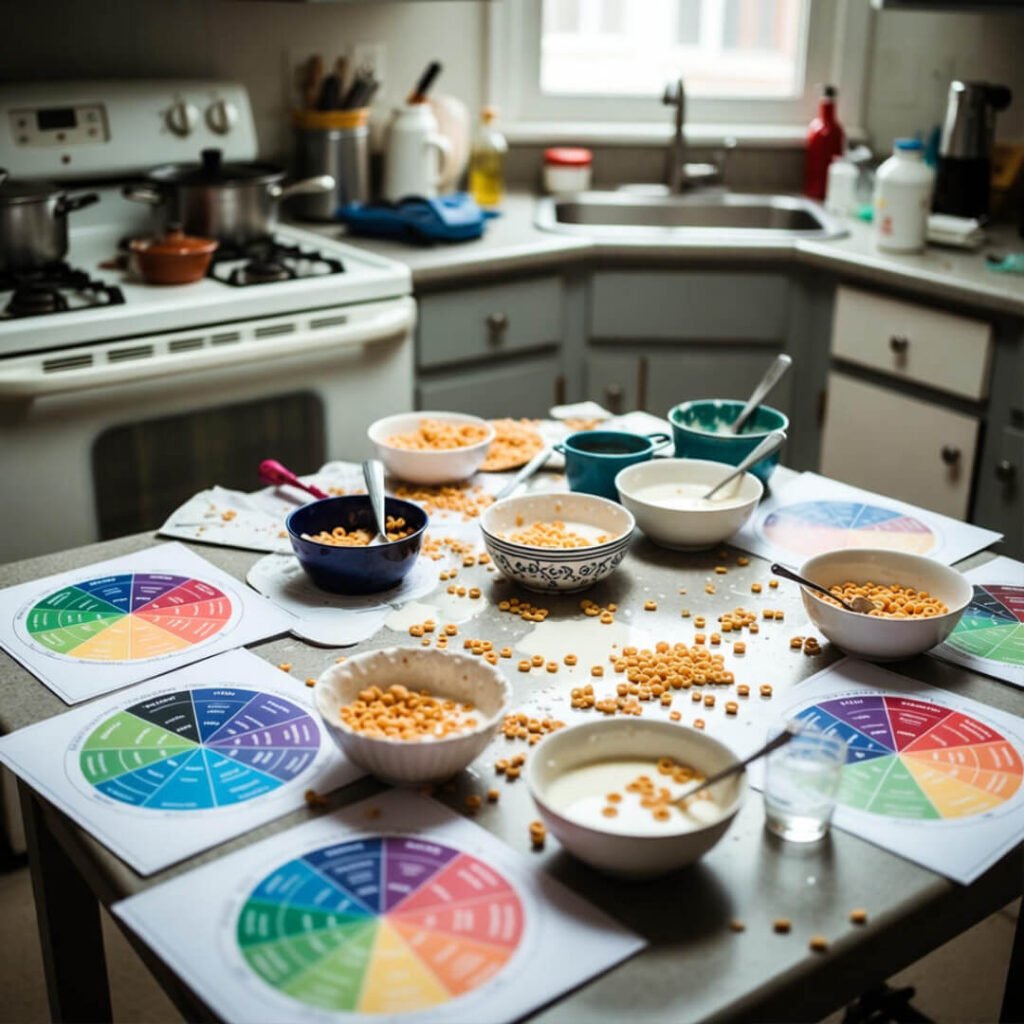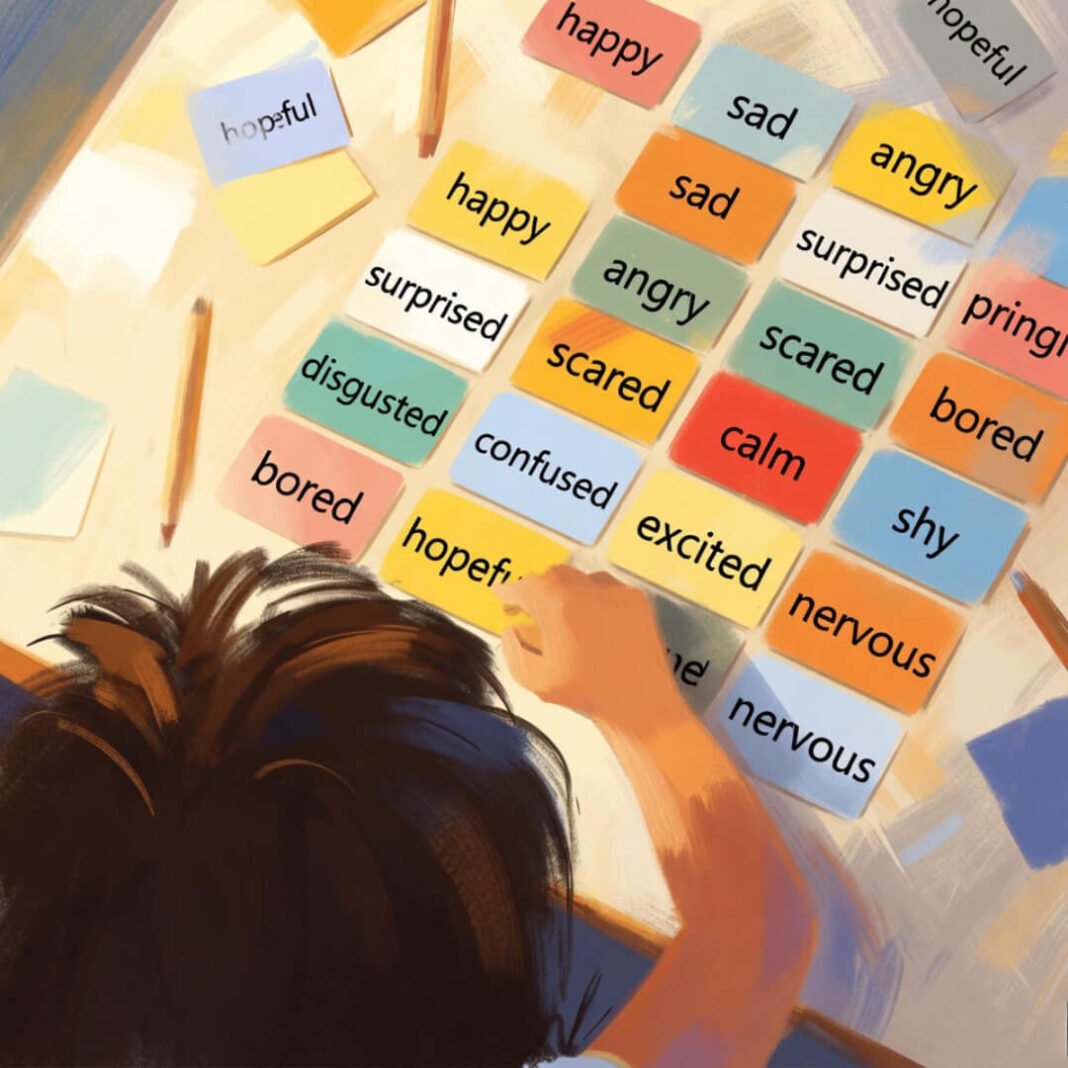Okay, real talk—I’m slouched on my sagging IKEA couch in the suburbs outside Chicago right now, November gray sky pressing against the window, dog snoring on my feet, and I’m still thinking about last Tuesday. My niece (who’s basically my practice kid) lost it because her Fortnite skin didn’t load or whatever, and I heard myself say the dumbest thing: “Are you mad or sad? Pick one.” Cringe. Teaching kids to understand their emotions shouldn’t feel like a multiple-choice quiz from 1998, but that’s where I was. The living room smelled like burnt toaster waffles and defeat, and I just sat there like… dude, you’re thirty-mumble years old, get it together.
Why I Finally Stopped Pretending Teaching Kids to Understand Their Emotions Is Easy
I grew up in a house where feelings were basically happy, sad, or “go to your room.” So when I started hanging out with actual children again, I thought I could wing it. Spoiler: no. Kids feel a whole crayon box of stuff—jealous, left-out, embarrassed, proud, overwhelmed, that weird tight-chest thing when the birthday song starts—and if we keep handing them a two-color palette, they’re screwed. I learned that the hard way when my godson described anxiety as “my brain is itchy” and I had zero follow-up. Zero. Felt like the worst fake-adult on earth.
The Time I Totally Botched It (Target Meltdown Story, Sorry Maya)
Picture this: Target, fluorescent lights humming like a headache, Maya’s six, she wanted the glitter slime, I said no because I’m cheap and it was $12. Full nuclear meltdown in the toy aisle. I knelt down—jeans ripping at the knee because of course—and whispered, “Use your words, are you sad?” She screamed louder. Some grandma gave me the side-eye that still haunts me. Turns out she wasn’t sad, she was disappointed + embarrassed + overstimulated from the lights + hungry. Four feelings, one tiny body. Teaching kids to understand their emotions starts with admitting I’m clueless half the time.
Stuff I Actually Tried That Didn’t Completely Suck
- The “feeling menu” on the fridge: I printed this wheel thing (link to the free one I used: https://positivepsychology.com/emotion-wheel/) and we point at it like we’re ordering tacos. Works 60% of the time, which is better than my batting average at anything else.
- Cloud feelings at the park: We look at clouds and yell what emotion they look like. Last week one looked “smug” and we laughed until we couldn’t breathe. Fresh air + feelings = cheat code.
- “Today I feel like a color” check-in at breakfast. Some mornings it’s “mustard yellow with a side of storm-cloud gray” and honestly, same, kid.

The Part Where It Gets Messy (Because Of Course It Does)
Sometimes we’re deep in a feelings talk and I accidentally say “I don’t know, Google it” because I’m tired and my own emotions are doing the Macarena. Sometimes they use the new words as weapons—“Uncle you’re being DISRESPECTFUL” when I take the iPad away. Teaching kids to understand their emotions also means they suddenly have vocabulary to roast you. Worth it? Yeah, I think so.
Another time I cried—legit cried—in front of my niece because work sucked and the Bears lost and traffic on I-90 was a parking lot. She patted my arm and said, “You feel heavy-sad today.” Six years old and she named it better than I could. Kids are feral little therapists if you let them.

Look, I’m never gonna be the Pinterest parent with the color-coded feelings chart and matching outfits. My version of teaching kids to understand their emotions is chaotic, half-assed, and happens between loads of laundry and doom-scrolling. But it’s happening, and that’s gotta count for something.




